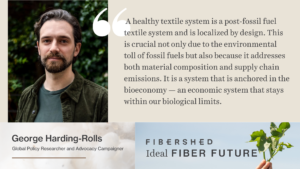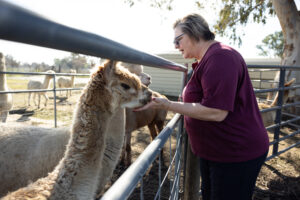Archived Project: Grow Your Jeans
During the one year 150-mile wardrobe challenge that kicked-off the Fibershed movement in 2011, one of the most missed garments in the home-grown challenge was jeans. The utilitarian workhorse clothing item was not an easily crafted garment and it drove the question of how could we grow our own jeans? The investigation promoted diving into indigo agricultural research, engaging a regional biodynamic cotton farmer, a local weaver, pattern drafter and sewer. The denim we created was a truly place-based collaboration. Our prototyping research included 18 pairs of pants. We are currently assessing the hurdles and developing the mechanisms to support a community driven denim jeans project that can scale.
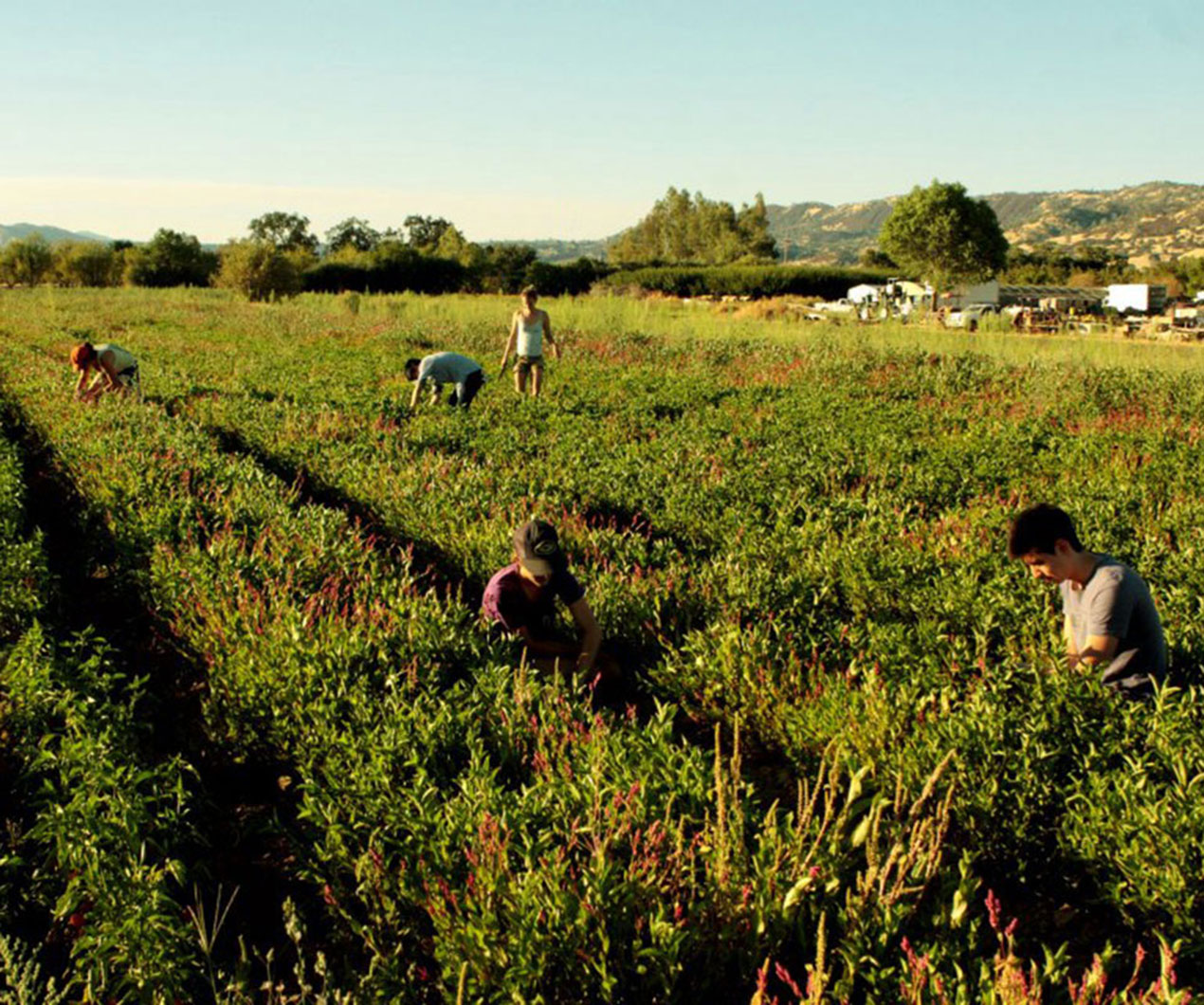
Indigo
Given the necessity of fossil fuel divestment in our era, we’ve taken a revisionist approach to blue; we’re growing our own—from the goodness of organically certified soils, the gracious participation of the sun’s energy, and the careful use of our water resources—our indigo plants have thrived in California’s Capay Valley.
Indigo is planted in late April to mid-May. The first harvest of the plant occurs in late June or early July when the crop is tall enough to prune. The second harvest occurs in late August, and then the plant is allowed to go to seed until the mid-fall. After each harvest the leafed stems are laid out to dry and with a watchful eye they are gathered at just the right moment when the stems remain supple and the leaves are crispy dry. Piles of the dried leaves and stems are stomped (by human feet), the stems are removed and composted for nutrient cycling, and the leaves are saved until the end of the season. Once all the leaves have been collected they are composted on a special composting floor made of stones, sand, rice hulls and clay (thank you Rowland Ricketts for teaching us your ways!). The pile is turned every 7 days for 100 days, the resulting composted leaf known as sukumo is then slowly fermented in water, using homemade hardwood wood ash lye, and crushed lime. The fermentation can take 18 to 30 days. When the vat is ready the dyeing then begins. There are no metallic mordants used to achieve the color. It takes 9 to 10 months from the time of planting to begin the dyeing process, there is great labor throughout the year required to manifest this form of blue.
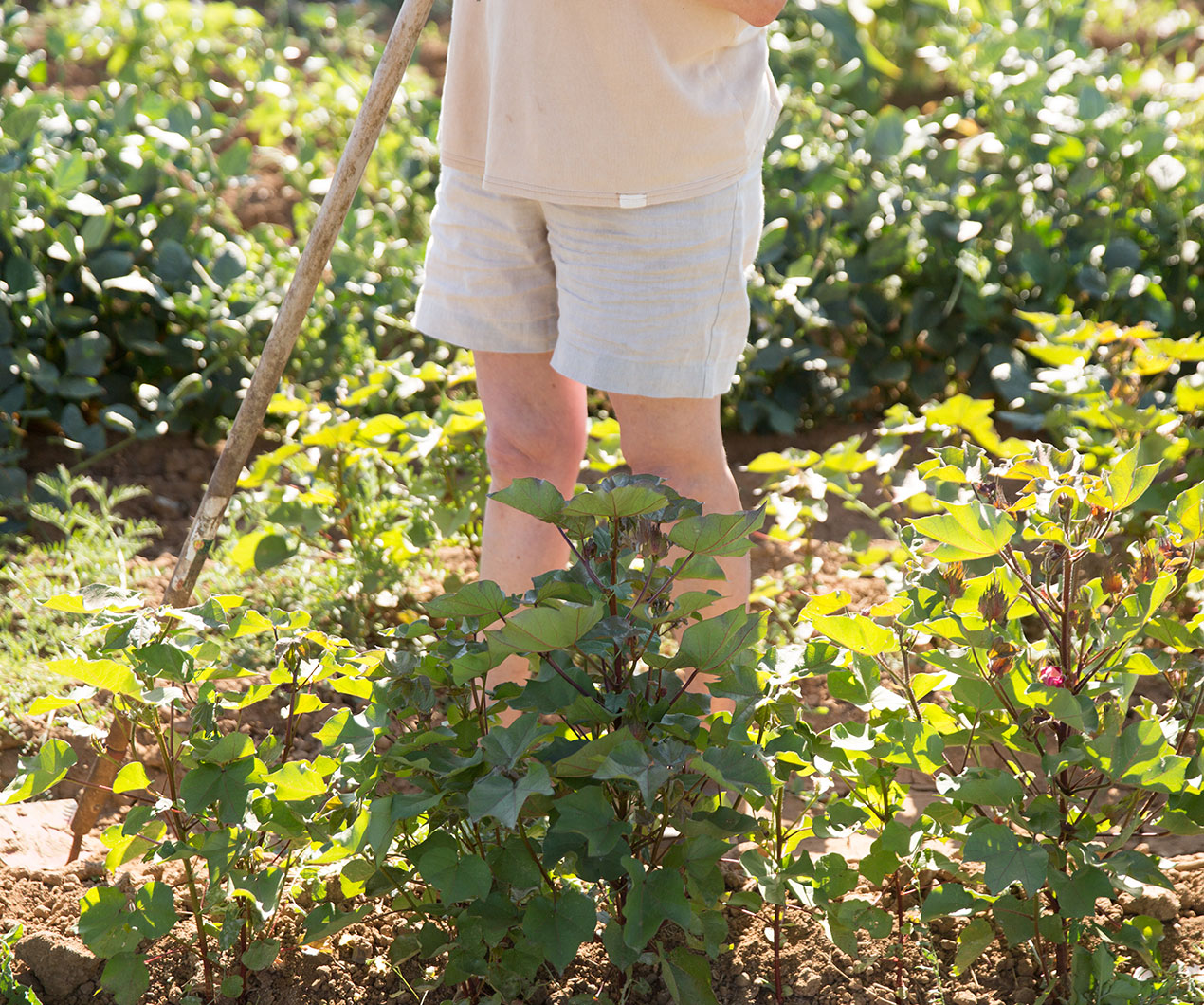
Non-GMO Cotton
Over 70% of the worlds cotton is genetically engineered to withstand the heavy use of glyphosate—the main ingredient in the herbicide Roundup. The fiber system has become wholly dependent on GMOs and their carcinogenic counterparts. We’d like to buck this trend, and see more people consciously inquire about the source of their fibers. The cotton for the Grow Your Jeans project was organically grown on soils that are rotationally grazed by sheep many months of the year. A single woman farmer—Sally Fox—has for the last 30 years worked to perfect naturally colored mill-able cotton varieties, and has pioneered the varieties that were used for this project. Sally’s farm is just down the road from River Dog Farm, one of our first indigo farming sites.
The cotton is planted after the last frost, around mid May. The seeds germinate within a week to 10 days, and the growing season begins. This cotton crop is co-planted each year with a variety of other species like milo and teff and nitrogen fixers including black-eyed peas. The cotton is harvested in the late fall and sent down south for ginning (seed removal). Then it travels to research mills in North Carolina, where the fiber is combed into sliver and then spun into yarn.
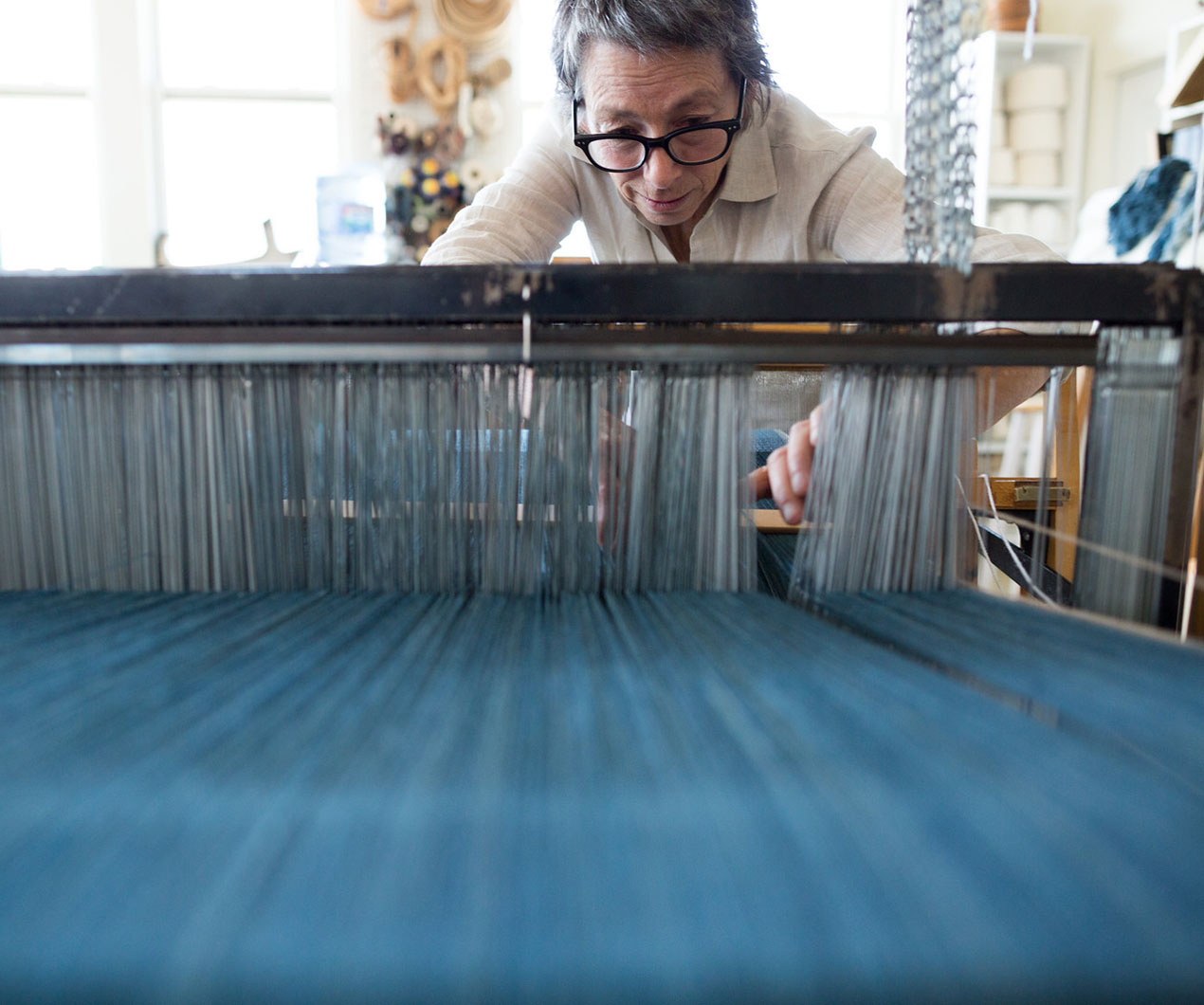
Weaving
The weaving of the denim fabric was done at TangleBlue, the studio of Leslie Terzian Markoff located on the Shipyard at Hunters Point, San Francisco. Leslie and her assistant Jessica Teitelbaum work on a Macombre floor loom—all human powered. We were able to avoid using fossil fuel-derived slashing agents and resins normally used to prevent breaks in yarn that is wound onto electric mechanical looms by working with Leslie’s hand- and foot-powered system.

Pattern Making & Sewing
A message from Daniel DiSanto: “I have been working on jean patterns for over 30 years. While sewing, I am inspired to try different stitching and construction features taken from historic denim. The jean ‘tells’ me how it should look, and I listen.
This fabric is so unlike the hard denim from the factories that these jeans became a revisionist approach to traditional denim. The styles we chose and the amount of ease allowed in the fit we created for this softer fabric will eliminate preconceived notions of what denim ‘should’ look like, and create a welcomed new perception of what a traditional 5-pocket jean could look like if it is locally grown. No two pairs are alike. Every marker creates a different jean according to the size of the wearer.
The cut and sew process is quite straightforward. I received measurements, altered the pattern blocks accordingly on the Assyst pattern system, hand cut the fabric one at a time and sewed the garments one at a time. I used every inch of this precious fabric. Perhaps some hats or bags may come out of the fallout.
The pocketing and exterior label are also hand woven out of the same cotton. The metal trims come from domestic factories, so as to avoid having new ones made overseas.”
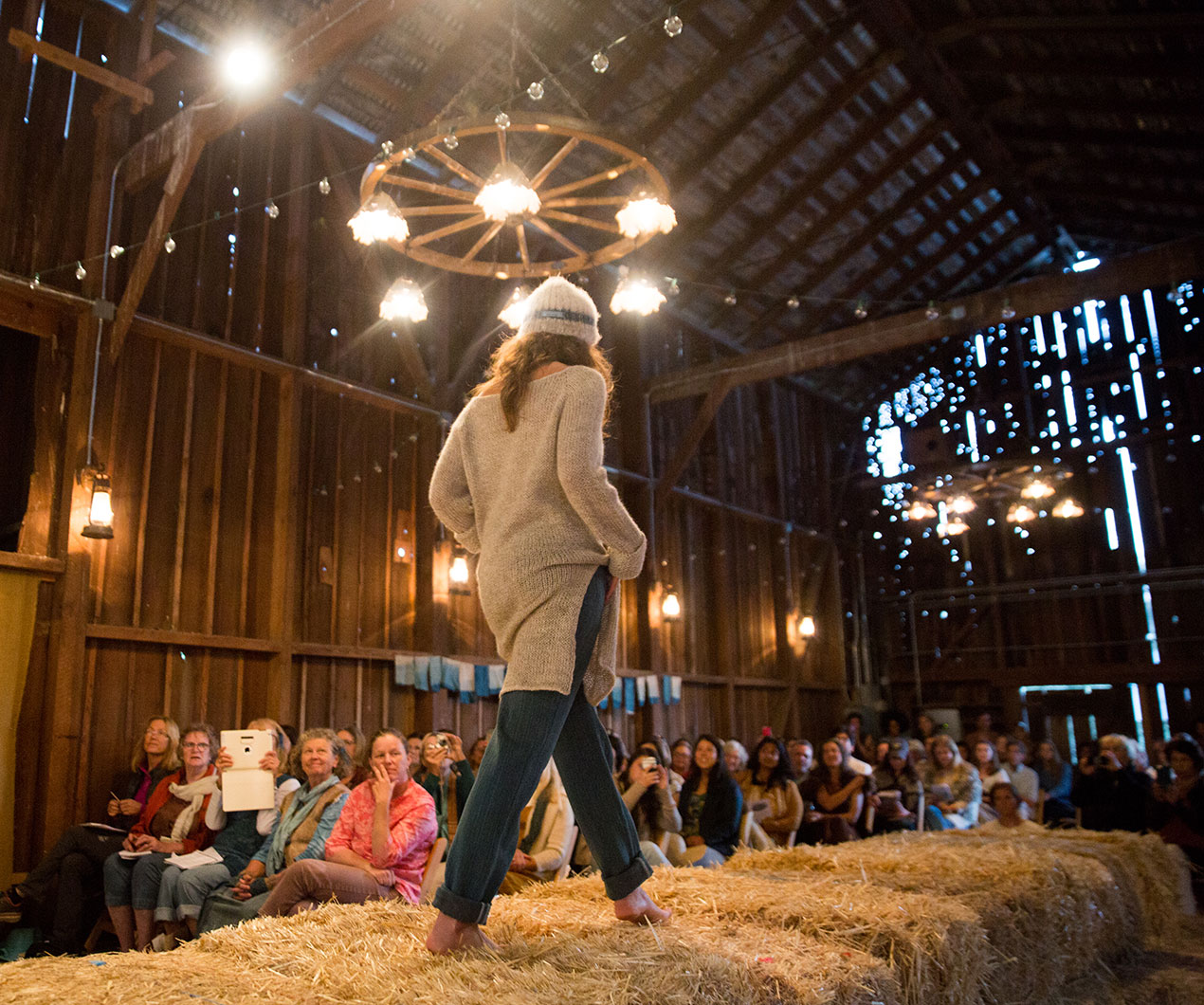
2015 Fibershed Gala: Grow Your Jeans
The Grow Your Jeans project culminated in a fashion show and gala hosted at the Mann Family Farm in Bolinas, CA, in September, 2015. Designers from the Northern California Fibershed community had been paired with fiber farmers and ranchers to create unique garments featuring local fiber materials, to complement the locally sourced and made jeans highlighted at the event. The event included hands-on activities, fiber processing demonstrations, and a marketplace of local fiber products, with locally sourced food and refreshments.
The Grow Your Jeans Team
Pattern Making & Sewing:
Daniel DiSanto
Weaving:
Leslie Terzian Markoff, TangleBlue
Indigo Farming & Dyeing:
Rebecca Burgess
Cotton Farming:
Sally Fox, Viriditas Farm
Photos by Paige Green, and courtesy of Rebecca Burgess (indigo field) and Viriditas Farm (cotton field)


